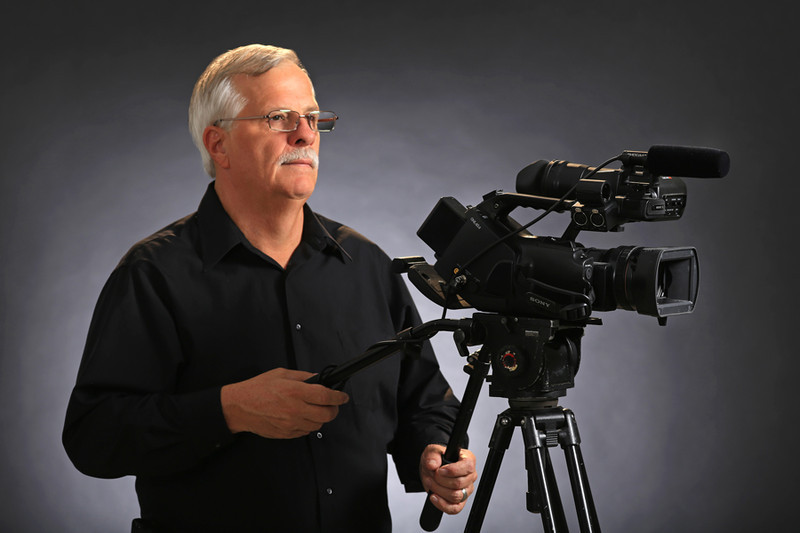Comprehending the Significance of Videography in Legal Process
The integration of videography into lawful proceedings has actually arised as a considerable aspect in the presentation and interpretation of evidence. By recording visual aspects such as body language and facial expressions, videography enhances the narrative surrounding witness testaments and can greatly influence jury understandings.
Function of Videography forthcoming
Videography plays an increasingly essential function in legal proceedings, acting as an effective medium for presenting evidence. The integration of video clip recordings right into the lawful framework permits for a more vibrant depiction of realities, allowing courts and jurors to envision occasions as they transpired. This aesthetic documentation can include a series of products, consisting of surveillance video, tape-recorded witness testaments, and specialist presentations, all of which can significantly improve the evidentiary landscape.
One of the primary advantages of videography is its capability to catch subtleties that might be shed in composed accounts. Face expressions, body language, and situational context can provide important understandings, assisting to convey feelings and purposes that text alone can not. Moreover, using video evidence cultivates an extra interesting court room experience, potentially assisting jurors in recognizing intricate situations.
As innovation developments, the high quality and ease of access of videographic proof have actually enhanced, making it an essential component of contemporary lawful methods. Courts significantly recognize the worth of video clip as a trustworthy resource of information, prompting attorneys to adapt their strategies for proof discussion. Eventually, videography serves not only to highlight truths however additionally to enhance the general stability of the judicial procedure.

Enhancing Integrity and Quality
A considerable advantage of incorporating videography in legal proceedings is its capability to improve both reputation and clarity of proof offered in court. Videographic evidence can catch nuances that written records may forget, such as tone, body movement, and context. This graph permits juries and courts to better understand the scenarios bordering the instance, thereby promoting a much more accurate understanding of the occasions in question.

In addition, the clarity afforded by videography minimizes the chance of false impression that can arise from textual descriptions. This accuracy is specifically important in intricate instances, where details can be quickly misconstrued. Ultimately, by presenting proof in a visually easily accessible format, videography not only reinforces the honesty of the judicial procedure but additionally supports informed decision-making by those included in lawful process.
Influence On Court Understanding
The incorporation of videographic proof considerably affects jury understanding, usually bring about much more engaged and educated considerations. Jurors are commonly more receptive to aesthetic her explanation details, which can enhance their understanding of complicated situations. Videography provides facts in a way that is both easily accessible and engaging, enabling jurors to connect with the evidence on a much more individual degree.
In addition, the capacity to witness occasions as they took place can stimulate emotional feedbacks that composed records or spoken statements might fall short to generate. This psychological interaction can lead jurors to form more powerful point of views pertaining to the credibility of witnesses and the general story of the instance. The visual depiction of proof likewise aids in making clear uncertainties, making it easier for jurors to grasp the context and relevance of the details provided.
Additionally, videography can offer as an effective tool for narration, enabling attorneys to construct a persuasive narrative that reverberates with the jury. When jurors can envision scenarios and witness essential minutes, their ability to purposeful thoughtfully and get to an educated decision is dramatically improved, ultimately affecting the result of lawful procedures.
Best Practices for Legal Videography
Implementing ideal practices in lawful videography is crucial for guaranteeing that aesthetic proof is both reliable and trustworthy in the you can try these out court. Initially, select qualified experts who focus on legal videography to guarantee the technical high quality of the recordings. This consists of utilizing high-resolution electronic cameras and expert audio tools to record clear visuals and audio.
Second, preserve correct documentation throughout the recording process. This involves creating a comprehensive log that includes timestamps, summaries of the content, and the identifications of all people present. Such documentation can strengthen the authenticity of the video.

In addition, take into consideration making use of ideal editing and click reference enhancing strategies. While it is essential to preserve the original content, small modifications for clarity-- such as enhancing audio degrees-- can boost the total presentation without modifying the substance.
Future Trends in Legal Videography
As lawful videography remains to progress, emerging innovations and techniques are shaping the future landscape of visual proof in the court (Legal Videography). One considerable fad is the assimilation of high-definition and 4K video high quality, boosting the clearness and information of videotaped testaments and evidence. This better resolution help jurors in adequately examining the reputation of witnesses and the nuances of the offered products
Furthermore, making use of artificial knowledge (AI) in video clip analysis is obtaining traction. AI devices can help in identifying essential minutes in footage, generating transcripts, and also evaluating non-verbal interaction, which gives deeper understandings right into witness reliability. Online fact (VIRTUAL REALITY) and increased truth (AR) are positioned to change exactly how evidence is presented, permitting jurors to submerse themselves in crime scenes or scenarios, therefore promoting an extra extensive understanding of the context.
Conclusion
In summary, videography functions as an essential tool in legal proceedings, improving the discussion of evidence and enhancing the overall understanding of cases. By catching non-verbal hints and reinforcing the trustworthiness of witness accounts, videography dramatically affects jury perception and decision-making processes - Legal Videography. Adhering to best methods makes sure the efficiency of lawful videography, while emerging patterns assure to further augment its duty in the judicial system, eventually promoting a more educated and involved lawful setting
Videography plays a significantly essential role in lawful process, serving as a powerful tool for presenting evidence.A considerable benefit of integrating videography in lawful procedures is its capability to improve both reliability and quality of evidence provided in court. Ultimately, by offering evidence in an aesthetically accessible layout, videography not only reinforces the stability of the judicial procedure but likewise supports enlightened decision-making by those entailed in lawful proceedings.
In summary, videography offers as an indispensable device in legal proceedings, enhancing the discussion of proof and enhancing the general understanding of instances. Legal Videography. Adhering to best methods ensures the effectiveness of lawful videography, while arising trends promise to more boost its role in the judicial system, inevitably fostering a much more educated and engaged legal atmosphere